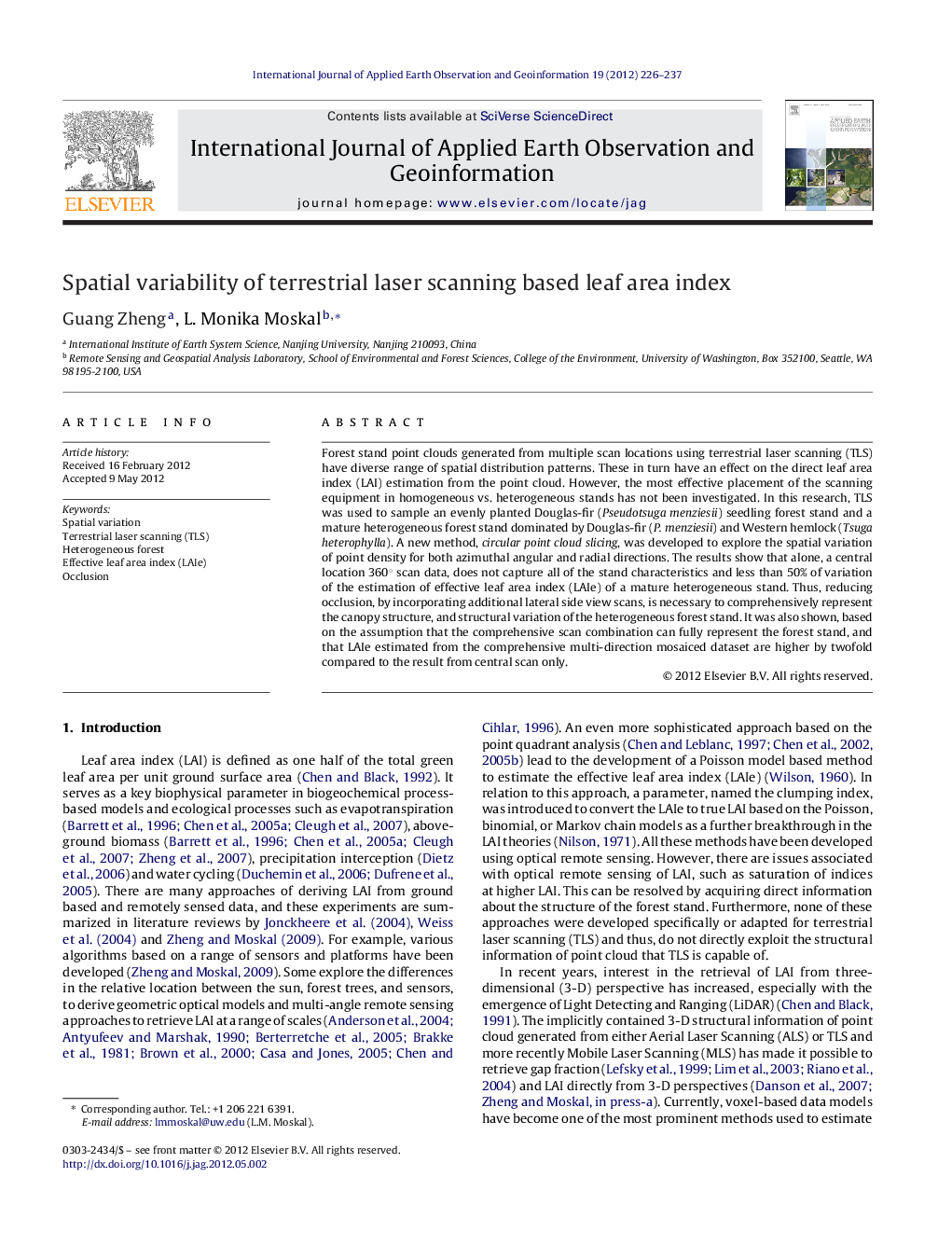| Article ID | Journal | Published Year | Pages | File Type |
|---|---|---|---|---|
| 4464986 | International Journal of Applied Earth Observation and Geoinformation | 2012 | 12 Pages |
Forest stand point clouds generated from multiple scan locations using terrestrial laser scanning (TLS) have diverse range of spatial distribution patterns. These in turn have an effect on the direct leaf area index (LAI) estimation from the point cloud. However, the most effective placement of the scanning equipment in homogeneous vs. heterogeneous stands has not been investigated. In this research, TLS was used to sample an evenly planted Douglas-fir (Pseudotsuga menziesii) seedling forest stand and a mature heterogeneous forest stand dominated by Douglas-fir (P. menziesii) and Western hemlock (Tsuga heterophylla). A new method, circular point cloud slicing, was developed to explore the spatial variation of point density for both azimuthal angular and radial directions. The results show that alone, a central location 360° scan data, does not capture all of the stand characteristics and less than 50% of variation of the estimation of effective leaf area index (LAIe) of a mature heterogeneous stand. Thus, reducing occlusion, by incorporating additional lateral side view scans, is necessary to comprehensively represent the canopy structure, and structural variation of the heterogeneous forest stand. It was also shown, based on the assumption that the comprehensive scan combination can fully represent the forest stand, and that LAIe estimated from the comprehensive multi-direction mosaiced dataset are higher by twofold compared to the result from central scan only.
► A new method, circular point cloud slicing, was developed. ► Results demonstrate appropriate terrestrial laser scanner setup in homogeneous and heterogeneous forest stands. ► Leaf area index spatial variability due to instrument setup was demonstrated.
